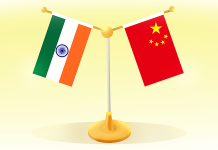
West Bengal witnessed a blend of religious devotion, political messaging, and sporadic unrest as thousands took to the streets for Ram Navami processions on April 6, 2025. With over 60 rallies in Kolkata alone and many more across the state, the day was marked by vibrant cultural displays and controversies alike.
In This Article:
Massive Turnout and High Alert Security
Ram Navami, which celebrates the birth of Lord Ram, has grown into a large-scale public event in Bengal in recent years. This year, the scale and security were both unprecedented.
Key Highlights:
- Over 4,000 police personnel deployed in Kolkata
- Real-time monitoring using drones and CCTV cameras
- Quick Response Teams (QRTs) stationed at key locations
- Central and state forces jointly monitored sensitive areas
Despite apprehensions of unrest due to political rivalry and religious tension, the majority of the processions across West Bengal concluded peacefully.
TMC and BJP Compete in Organizing Processions
A major shift observed this year was the active involvement of Trinamool Congress (TMC) leaders in Ram Navami celebrations—a space earlier dominated by the Bharatiya Janata Party (BJP).
The ruling party in Bengal organized multiple processions, mirroring the format and slogans typically associated with the BJP’s religious events. This was seen as a strategic attempt by TMC to tap into the Hindu voter base ahead of the 2026 general elections.
Meanwhile, BJP leaders and workers maintained their stronghold in organizing rallies in traditional areas like Howrah, Siliguri, and parts of Kolkata.
Clashes Reported in Park Circus Area
While most events concluded without incident, tensions did flare up in Kolkata’s Park Circus area, where one Ram Navami rally was allegedly attacked with stones. The BJP accused local miscreants of targeting Hindu devotees.
Law enforcement swiftly intervened and brought the situation under control. No injuries were reported, and the police later clarified that the incident was minor and isolated.
Weapon Displays Stir National Debate
Another point of controversy that ignited social and political debate was the display of weapons during several processions. Swords, tridents, and other traditional arms were seen being held by rally participants—including children.
This drew sharp criticism from civil society groups and opposition parties who accused organizers of weaponizing religious events for political gains.
However, BJP leaders defended the practice, claiming it was part of Hindu customs and had symbolic relevance to Ram Navami traditions.
Social Media Buzz and Mixed Public Response
Social media platforms saw a surge in posts, reels, and live videos from the processions, with reactions ranging from pride and celebration to criticism and concern.
Some users hailed the cultural resurgence, while others called for stricter regulation of religious events, especially in communally sensitive zones.
Peace Maintained Despite Provocations
Thanks to preventive actions by law enforcement and cooperation from local communities, the day did not escalate into widespread unrest.
Authorities across Bengal have praised both the organizers and the general public for maintaining discipline, even amid rising political rhetoric and provocations.
Moving Forward: A Day of Devotion or Division?
Ram Navami in West Bengal this year was more than a religious celebration—it became a platform for political posturing, cultural assertion, and security challenges. With two major parties now vying for influence through religious events, the line between faith and politics continues to blur.
Yet, the relative calmness of the day signals a maturing civic awareness. Whether this trend continues will depend on how both political actors and religious communities handle future events—balancing passion with peace.
By – Nikita



